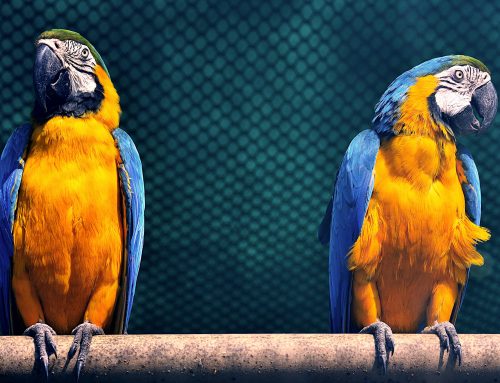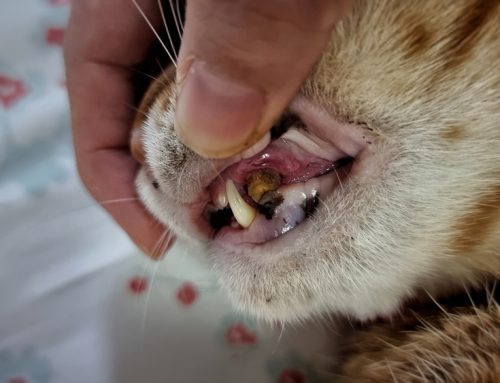Neutering is the surgical removal of the testicles from male animals. A neuter surgery can be performed on most species, but this article will describe the surgery as performed in dogs and cats.
Purpose
All animals that will not be used for breeding should be spayed or neutered. Neutering prevents testicular cancer and greatly reduces the risk of prostate problems and sexually transmitted diseases. Neutering reduces some undesirable behaviors, including the desire to roam, urine marking and some aggressive tendencies. It permanently sterilizes the pet and eliminates the possibility of unwanted offspring. Finally, a neuter surgery may be recommended as a treatment option in the case of cancer or other disease of the reproductive tract or prostate gland.
Patient Selection
Any male animal can be neutered. Most practices neuter dogs and cats between 4 and 7 months of age, but it can be performed at any age. Some rescues neuter puppies and kittens as early as 8 weeks of age to ensure sterilization prior to adoption. Any animal that is not intended for breeding should be neutered to prevent diseases of the reproductive tract. Animals that are cryptorchid, or have a retained testicle or testicles, should be neutered under all circumstances due to their very high risk of testicular cancer. Patients should be thoroughly screened for any concurrent health conditions that might increase their anesthetic risk and these conditions should be addressed prior to surgery.
Risks & Complications
Thankfully, risks and complication of this surgery are rare. Spay and neuter surgeries are some of the most common surgeries performed in the average small animal hospital and the average veterinarian has ample experience with these procedures. Risks and complications, although rare, may include:
- Anesthetic complications
- Infection
- Damage to the penis or a ureter (this is extremely rare)
- Excessive blood loss
- Scrotal hematoma or bruising
- Dehiscence (the incision opening up)
- Post-operative trauma to the incision by the patient
What To Expect
Most neuter surgeries are performed on an out-patient basis. Generally the animal is dropped off at the veterinary hospital on the morning of the surgery and picked up the same afternoon or evening. You will be required to withhold food for 12 hours prior to surgery, but should allow access to water to prevent dehydration.
Most often, your pet will be dropped off at the veterinary hospital early the day of his surgery. The doctor will perform an exam and run any recommended pre-anesthetic testing to ensure he is healthy enough for surgery. Once he is cleared for surgery, the patient will receive pre-anesthetic medications including sedatives and pain medication. After a short period, the patient is then induced, generally using short-acting anesthetic injectable drugs. An endotracheal (breathing) tube or anesthetic mask will be used to administer inhalant anesthesia.
While anesthetized, the patient is monitored by a licensed veterinary technician using a stethoscope, EKG, pulse oximeter, carbon dioxide monitor and blood pressure monitor. He receives thermal support with a warm-air blanket, and his temperature is monitored closely. Dogs receive IV fluids throughout the procedure to maintain their blood pressure and hydration. Because cat neuters are a short procedure (< 20 minutes), low blood pressure and dehydration are a minimal risk and IV fluids are not necessary. The veterinary technician is present at all times to monitor anesthesia and make any necessary adjustments.
A neuter surgery is a sterile procedure. In dogs, an area just in front of the scrotum is clipped free of hair and scrubbed using a surgical preparation solution; a sterile drape is then placed. In cats, the incision is made into the scrotum itself; the area is plucked clean of hair and then prepped using surgical solution. The doctor will scrub, don a sterile gown and gloves, and use sterile surgical instruments to perform the surgery.
For a dog neuter, the veterinarian will make an incision over the penis just in front of the scrotum. Through this incision, the doctor will exteriorize each testicle and tie off all the blood vessels associated with it before transecting it from the surrounding tissue. Once satisfied that all bleeding has been stopped, the doctor will close subcutaneous tissues and skin with absorbable sutures. Sometimes the skin sutures are absorbable and buried within the skin; other times, sutures are placed on the surface of the skin and will require removal 10-14 days after surgery.
Cat neuters are slightly different. The veterinarian will make an incision into each side of the scrotum separately. Each testicle is exteriorized, removed, and then the vessels are tied upon themselves to stop the bleeding (this is called “self-ligation”). The doctor will to ensure all bleeding is controlled, and then will return the ligated vessels to the scrotum. Cats are experts at forming abscesses and are at increased risk for abscess formation if the incisions are closed. Thus, the incisions in the scrotum are left open and heal on their own without suture placement.
The anesthesia gas will be discontinued and the animal will be allowed to wake up. The endotracheal tube is not removed until the animal is awake enough to swallow and move his head. As the patient breathes off the anesthetic gas, he will gradually wake up. Pain medication is administered as needed to keep the patient comfortable during recovery.
Common Myths Regarding Neutering Your Pet
- Myth: Neutering causes weight gain. The truth: Neutering an animal does decrease his metabolism, but too many calories coupled with too little exercise is the real cause of weight gain.
- Myth: You should wait until after an animal is fully grown to neuter him. The truth: Many of the objectionable male behaviors (urine marking, “humping”, roaming, some aggressions) are learned during adolescence when testosterone increases in the body. By neutering before this time, the animal does not learn these behaviors, making him a more pleasant pet to live with. There is also no evidence that neutering prior to adulthood reduces the overall size of the animal.
- Myth: Neutering causes a change in personality. The truth: Many pets are neutered during puberty, a time for behavioral and personality changes. The surgery does not contribute in any way to these changes.
- Myth: My pet is a purebred, so he should be bred. The truth: Just because your
- pet has papers does not mean he is a good candidate for breeding. Breeding dogs should be screened thoroughly for genetic abnormalities and heritable conditions, and they should be carefully matched to an equally well-screened mate. Breeding is expensive and labor-intensive, and carries the risk of transmitting sexually transmitted diseases to your pet; it should not be undertaken without being thoroughly researched. Finally, being purebred does not protect a dog from ending up in a shelter. Statistics show that 1 in 4 dogs in animal shelters are purebred.




Leave A Comment